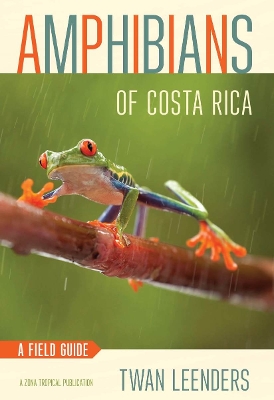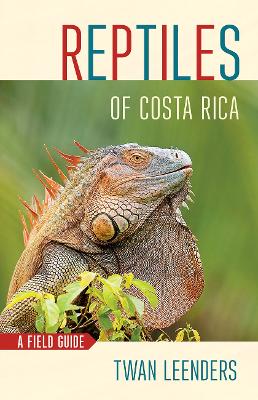Zona Tropical Publications
2 total works
Amphibians of Costa Rica is the first in-depth field guide to all 206 species of amphibians known to occur in Costa Rica or within walking distance of its borders. A diminutive nation with abundant natural wealth, the country is host to 146 species of frogs and toads. Frogs of gemlike beauty and dizzying variety abound: some species can fit on the end of a human finger; others would take two hands to hold. In the rainforests, you can find frogs capable of gliding from high in the treetops to the forest floor, some that carry their eggs or their tadpoles around on their back, and others that secrete glue-like substances from their skin that are capable of sticking shut the mouth of attacking snakes.
Costa Rica is also home to fifty-three species of lungless salamanders, whose unique adaptations and abilities have allowed them to colonize habitats inaccessible to other amphibians. In addition to the spectacularly diverse salamanders, frogs, and toads found in the country, this guide includes the caecilians—bizarre and highly specialized creatures that somewhat resemble giant worms.
Author, photographer, and conservation biologist Twan Leenders has been studying the herpetofauna of Central America for more than twenty years. Leenders and his team of researchers have traipsed the rainforests, dry forests, and swamps of Costa Rica—toting portable photo studios—to put together the richest collection of photographs of Costa Rican herpetofauna known to exist. In addition to hundreds of photographs, range maps, morphological illustrations, and precise descriptions of key field characteristics, Amphibians of Costa Rica offers a wealth of natural history information, describing prey and predators, breeding strategies, habitat, and conservation status.
Reptiles of Costa Rica, the long-awaited companion to Amphibians of Costa Rica, is the first ever comprehensive field guide to the crocodilians, turtles, lizards, and snakes of Costa Rica. A popular destination for tourists and biologists because of its biodiversity, the country is particularly rich in reptile fauna, boasting 245 species. The sheer diversity in shapes, sizes, colors, and natural history traits of these animals is beautifully displayed in this book. Lizards range from minuscule dwarf geckos to dinosaur-like iguanids, and everything in between, while the country's snakes include tiny eyeless wormsnakes, massive boas, as well as twenty-three dangerously venomous species, which include the largest vipers in the world.
Author, photographer, and conservation biologist Twan Leenders has been researching and documenting the herpetofauna of Costa Rica for nearly twenty-five years. His explorations have taken him to remote parts of Costa Rica that few people ever visit, journeys that usually find him hauling an array of photographic equipment to document his finds. In addition to including more than 1,000 photographs, detailed black and white scientific illustrations, and range maps, this book also features paintings of anole dewlaps, a key identification feature for that very complex group of lizards. This new field guide will enable the reader to identify all species, while also providing a wealth of information about natural history, predation, breeding strategies, habitat preferences, and conservation of Costa Rica's reptile fauna.

